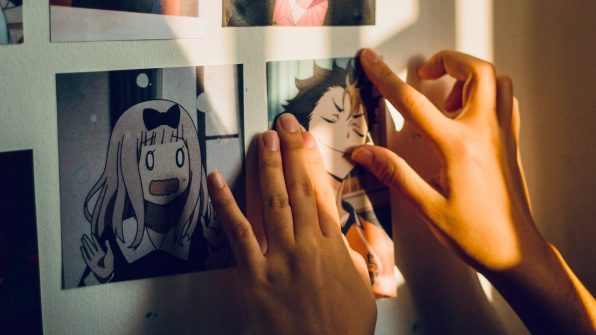
The world of art is an expansive and ever-evolving realm that encompasses a breathtaking variety of forms, styles, and expressions. It’s a space where creativity knows no bounds, and artists continually push the boundaries of conventional definitions to communicate their ideas and emotions. Yet, within this vast landscape, a question persists, casting a profound shadow of debate and contemplation: Is hentai a legitimate art form?
Hentai is a genre of explicit anime or manga featuring sexual content, porno xxx even, and it has ignited passionate discussions among artists, critics, and enthusiasts. Some fervently argue that it possesses the essential qualities of art, while others dismiss it as mere pornography. This article embarks on a comprehensive exploration of this controversy, dissecting the artistic elements inherent to hentai, delving into its capacity for expression and creativity, considering the subjectivity that characterizes the world of art, and examining the intriguing historical context that offers a unique perspective.
Artistic Elements in Hentai
At the heart of the debate surrounding hentai’s status as a legitimate art form lies the intricate craftsmanship evident within this genre. A closer examination reveals that hentai often showcases an impressive display of artistic prowess. These artworks frequently feature elaborate character designs, meticulously rendered backgrounds, and narratives that unfold with a level of complexity akin to more traditional forms of art.
Proponents of hentai as art argue that the dedication and skill invested in creating these works elevate them to the status of legitimate art. Just as a painter painstakingly blends colors on a canvas or a sculptor meticulously molds clay into captivating forms, hentai artists channel their talents to craft visually engaging and narratively rich pieces. These artists invest countless hours perfecting their techniques, demonstrating a commitment to their craft that is often overlooked.
Expression and Creativity in Hentai
Art, at its core, serves as a powerful conduit for expression and creativity, providing artists with a platform to channel their thoughts, emotions, and perspectives into their creations. In this regard, hentai stands as no exception. Artists within this genre explore a vast array of themes and narratives through their drawings and animations.
It is crucial to emphasize that creativity within hentai extends far beyond its explicit content. While sexuality is undoubtedly a central theme, many hentai works delve into complex and multifaceted topics, such as love, desire, human relationships, and the intricate facets of the human experience. In doing so, they employ explicit content as a means to explore these themes in a deeply introspective and thought-provoking manner, often employing symbolism and allegory to convey deeper meanings.
The Subjectivity of Art
One of the most salient features of the art world is its inherent subjectivity. Art’s definition is fluid, varying from one observer to another. This subjectivity extends to hentai as well, where opinions and interpretations can differ markedly. What one person perceives as art, another may not.
This inherent subjectivity underscores the notion that there is no universally applicable criterion that can definitively categorize or disqualify hentai as art. It is, in essence, a matter of individual perspective, shaped by personal sensibilities, preferences, and cultural backgrounds. It is this very subjectivity that keeps the discourse surrounding art ever-evolving and dynamic.
Historical Context and Parallels
To gain a deeper and more nuanced understanding of whether hentai qualifies as a legitimate art form, it is valuable to examine its historical context. Proponents argue that hentai shares striking parallels with historical forms of erotic art, such as Japan’s shunga.
Shunga, a genre of Japanese erotic art, traces its origins back to the Heian period (794-1185). These intricate woodblock prints delved into themes of love, sexuality, and human relationships, often with a blend of humor and sensuality. Significantly, shunga was frequently commissioned by the upper echelons of society and is recognized as an integral part of Japan’s artistic heritage.
In this historical context, hentai can be seen as a contemporary extension of the age-old tradition of erotic art. Both shunga and hentai share a common thread in using explicit imagery to explore human desires and relationships, often challenging societal norms and expectations in the process.
The Contentious Nature of Hentai
It is essential to acknowledge that the explicit and frequently pornographic content inherent to hentai forms a central point of contention in the debate surrounding its status as art. While proponents argue that it can be appreciated for its artistic merits, detractors emphasize that its primary focus on explicit sexual content overshadows any artistic qualities it may possess.
The explicit nature of hentai makes it a divisive and polarizing art form. Some individuals view it as a valid medium for artistic expression, appreciating its ability to tackle complex themes and emotions through a visually stimulating medium. In contrast, others assert that hentai’s primary intent is sexual arousal, relegating it to the realm of pornography.
Conclusion
In conclusion, the question of whether hentai qualifies as a legitimate art form remains open to interpretation. It hinges on individual perspectives and cultural contexts. While some firmly regard hentai as a valid and creative form of artistic expression, others primarily view it as a form of entertainment or pornography.
The controversy surrounding hentai’s status as art underscores the fluid and subjective nature of the art world. It serves as a reminder that art has the power to challenge norms, provoke thought, and evoke emotions, regardless of the medium or subject matter. Whether or not hentai ultimately earns its place within the pantheon of art forms, its undeniable presence in the broader discourse of creative expression ensures that the debate will persist, offering fertile ground for continued discussion and exploration. Ultimately, the answer to this question may remain as diverse and multifaceted as the art world itself.